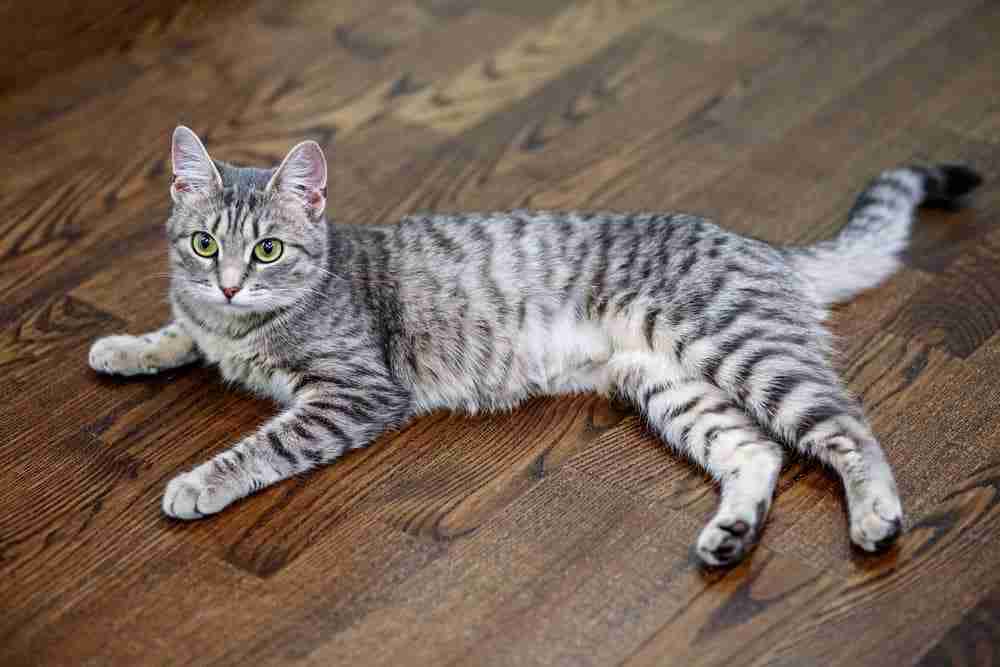If you have a problem with cat hair – either you don’t like hair on clothes or furniture because it looks messy, or you suffer from allergies to cats – but you love cats, then you probably prefer a cat that doesn’t shed! One of the common questions people ask is do shorthair cats shed? Is it just long hair cats that lose their hair?
The simple answer is that shorthair cats do shed, but some shed more than others and some shed so little they are considered almost “hypoallergenic” in some circles and definitely vastly easier to live with than many other short and long hair cats.
Read on to learn more…
Do All Cats Shed
Shorthair, longhair or medium hair, double coat or single coat – all cats shed their hair. There are no cats that don’t shed hair. Even hairless cats shed hair! (They are never truly hairless).
Some cats shed more than others and that can be down to breed, health status, or coat type – but there is no such thing as a cat that does not shed!
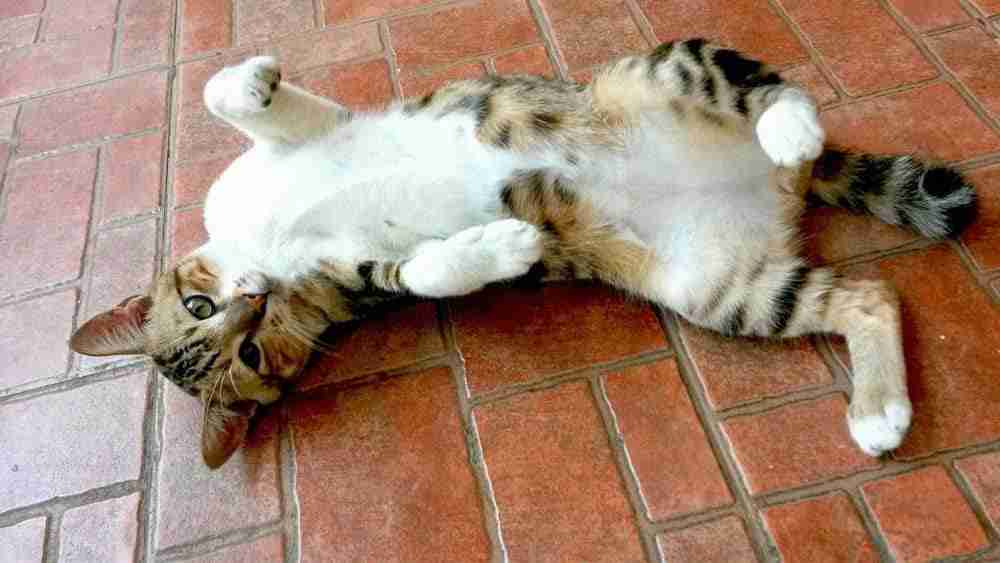
Why Do Cats Shed
If they all shed hair there must be a good reason for it? Well, there is. The main reason for shedding is because cat hair has a life cycle. It requires replacement at regular intervals either to replace damaged hairs or to provide an efficient coat depending on the climate they are living in.
This hair replacement life cycle has four stages. It begins with a period where the hair is formed in a follicle called the Anagen phase, then the hair enters a growing stage where it develops length and thickness from follicle to final length. This stage is called the Catagen phase. Then the hair enters a period of dormancy where it neither grows nor drops out. It simply does its job of protecting your cat from the environment it is living in – this is called the Telogen phase. The final stage of the cycle is called the Exogen phase and it is during this stage that your cat sheds hair. The cycle begins anew after the completion of this final stage.
Cats that live in temperate or sub-polar regions, regions that have four seasons, tend to shed twice a year. They shed a winter coat in spring and a summer coat in late autumn.
An indoor cat living in this region may shed their coat continuously, but this is often a result of light exposure. In a natural environment, a cat sheds its coat in spring and autumn due to changes in light exposure. An indoor cat has generally consistent light exposure and ends up with a messed-up cycle that sheds continuously!
A cat living in a tropical region where light levels are consistent all year round will often shed continuously to replenish aging, damaged hair. They don’t usually have coats that are thicker at some points of the year and thinner at others!
Alternatively, your cat may shed hair due to allergies, parasites, or poor body and skin conditions brought on by an inappropriate diet – they are not receiving the nutrients they need to support a healthy body condition.
Do Shorthair Cats Shed Less?
Do shorthair cats shed less than other cats? Yes and no. Some shorthair cats with a single coat, no undercoat, do shed less volume of hair than other cats. These cats tend to be from cat breeds originating in the more tropical areas of the world – such as the Burmese cat or Siamese cat.
Your average domestic shorthair cat is likely to have two coats, an undercoat, and a top coat. They will shed and will have more volume than a shorthair cat with a single coat. You can check for the undercoat by parting the fur. An undercoat is the downy short fur close to the skin, it is distinctly different from the longer topcoat hair.
So do shorthair cats shed less than long hair cats? Again, the answer to this is not straightforward. A long hair cat will have a longer hair lifecycle because the second stage of the lifecycle is extended due to the extra growing time for the long hair. But, when the long hair does shed it sheds in greater volume.
The overall effect is that a shorthair seems to shed more often but drops less hair by volume whereas a longhair will not shed quite as often but when it does it drops a lot of hair.
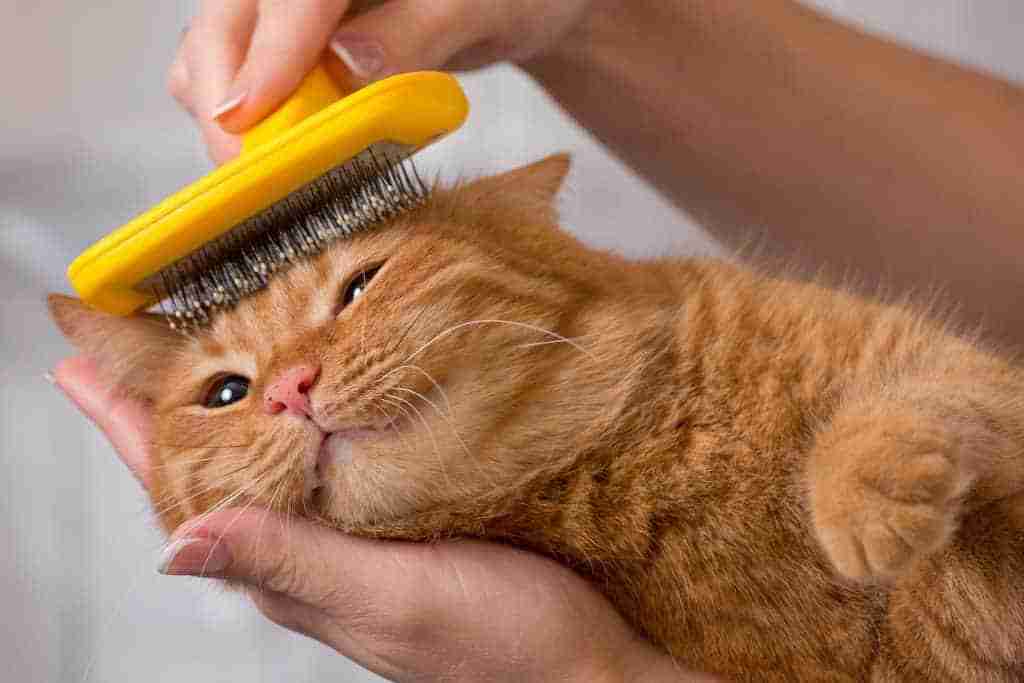
Can I Reduce Shedding
If your cat is healthy and stress free then you won’t be able to reduce shedding – you will only be able to control the shedding. If your cat is shedding a lot, check their diet and eliminate stress – this may reduce some shedding, but won’t totally eliminate the issue.
You can control shedding by grooming your cat with a brush regularly, like several times a week, by bathing your cat in warm water which is thought to hasten the shedding of hair that is due to fall in the near future, and by using omega 3 and 6 supplementation to ensure they have nutrients vital for a healthy coat. Supplements should be used under advice from a vet.
The secret is not really to stop shedding but to capture the shed hairs before they get distributed all around your home or environment.
Shorthair Cat Breeds That Shed Less
There are some shorthair cat breeds that shed less than other cats. These are the cats with a single coat – usually no undercoat, and generally, their breeds originate from the warmer climates where a heavy coat would be pointless.
Additionally, some of the hairless breeds are worth consideration but whereas grooming may be an obstacle with a standard double-coated cat the hairless breeds tend to need regular bathing, usually weekly, to maintain good skin condition so they are not necessarily the ideal cat for people who want a more hands-off approach!
Check out these short-hair, single-coat cat breeds if you want a short hair that sheds less:
Burmese
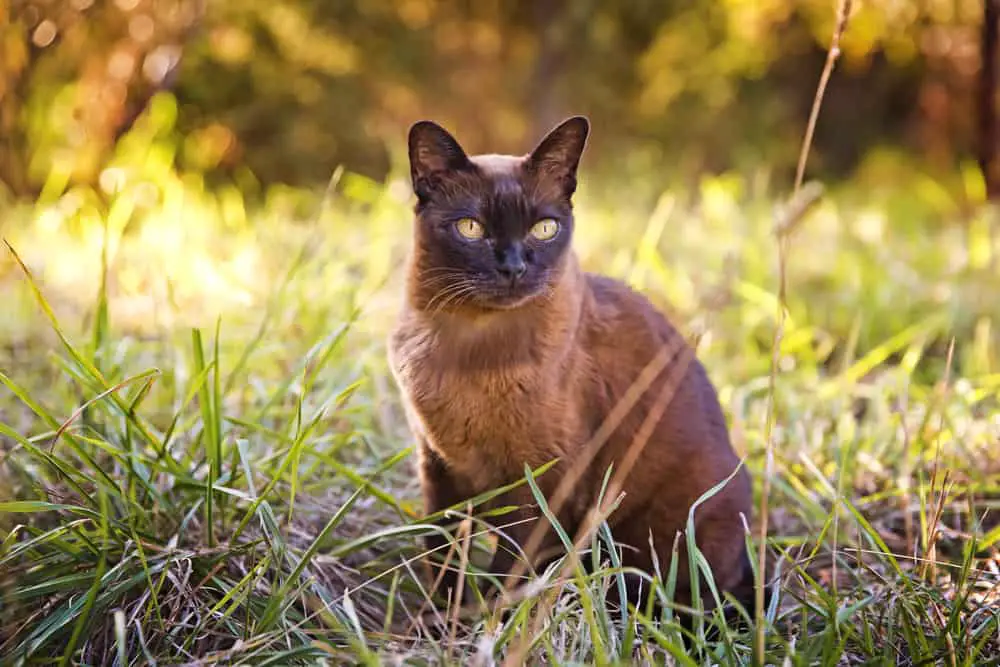
The Burmese cat is a favorite amongst people who have allergies to cats. They are believed to produce fewer Fel D1, D2, and D3 proteins in their saliva which are the proteins that people with cat allergies react to. This means they are less likely to produce an allergic response in people.
But, the big win with these cats is that they have short fine hair, and no undercoat so when they shed, which they do, the volume is very low to be almost unnoticeable. Combined with a lower concentration of the Fel D1 protein this makes these cats good for people with cat allergies and good for people who simply don’t want hair all around their home.
Siamese
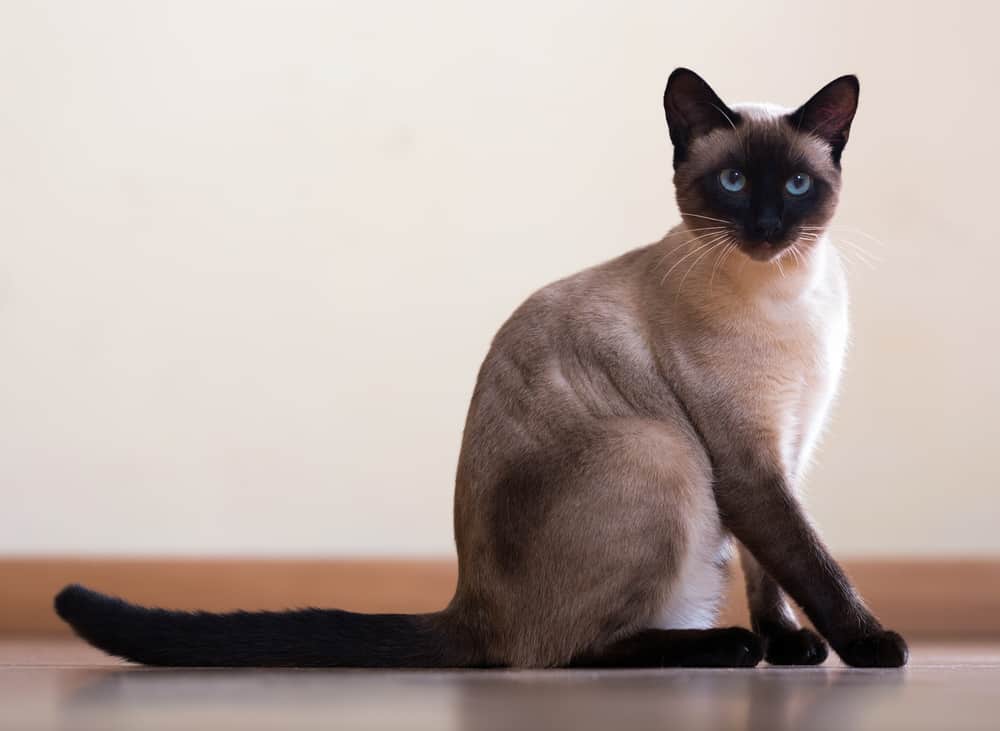
The Burmese cat breed in its modern form originates from cross-breeding between a shorthair cat from Burma of chocolate color and a seal point siamese cat.
It should be no surprise to learn that siamese cats are known to have a short, fine coat without an undercoat! Indeed, this may be where the Burmese cat gets its fine coat! A fine, short coat is ideal for the climate of Thailand. Siamese cats do shed but their fine, short, silky coat makes them a notable low-volume shedder.
Compared to other cats on this brief list, siamese cats are very widespread and easily sourced. This is because they have been hugely popular for over 100 years in the west due to their interesting looks, easily managed coats, and sociable personalities. If a low-shedding cat is your number one requirement then a Siamese may be your best bet if you can keep them mentally stimulated!
Devon Rex
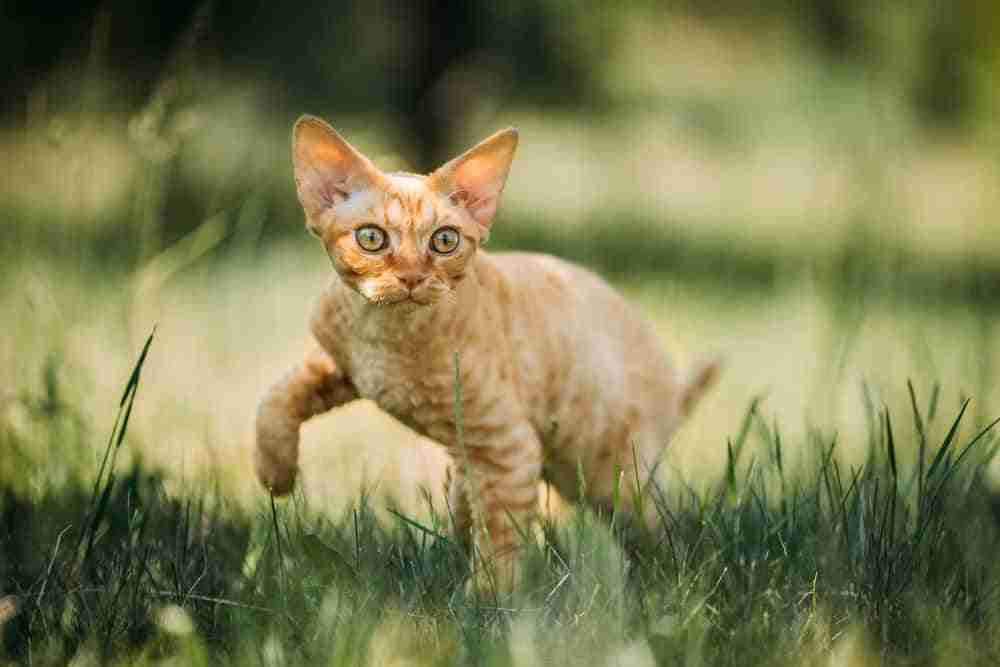
The Devon Rex is a breed that emerged in the 1950s in the UK. They are instantly recognizable by their small, lightweight look, large rounded ears, round eyes, and curly or wavy fur. Their triangular faces, large ears, and rounded eyes give them quite an exaggerated look, leading them to be compared to pixies!
They are playful and sociable and have emerged as a natural breed by a normal mutation rather than by planned breeding – so they are generally as healthy as any domestic shorthair cat.
The reason these cats are on the list is that their curly coats are rather notable for not having guard hairs, the longer outer coat hairs you might expect to find on a cat. They have a short, downy coat which means they just don’t shed in great volume compared to standard domestic shorthair cats with their longer guard hair coats.
Cornish Rex
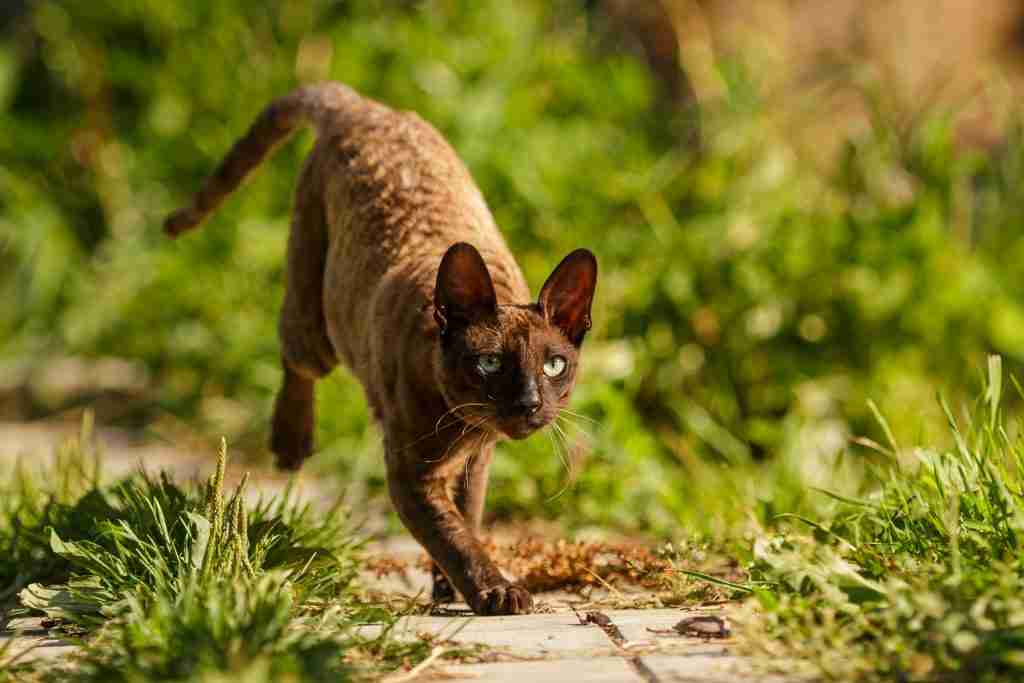
You might think, given the proximity of Cornwall to Devon that the two Rex cats are related but you would be wrong!
Although they both emerged during the 1950s, quite naturally without any planned breeding, the two cats actually have different gene mutations that produce their distinctive coats!
Whereas the Devon Rex does not have any guard hairs but has an under and mid coat, the Cornish Rex has only the downy undercoat! This means their fur is short, fine, and downy. It also means when they shed they shed very little because there is not much hair available for shedding!
Attempts have been made to breed Devon Cornish Rex cats together to achieve a curly but even finer coat but all the kittens produced ended up with straight hair minus the curl!
Korat
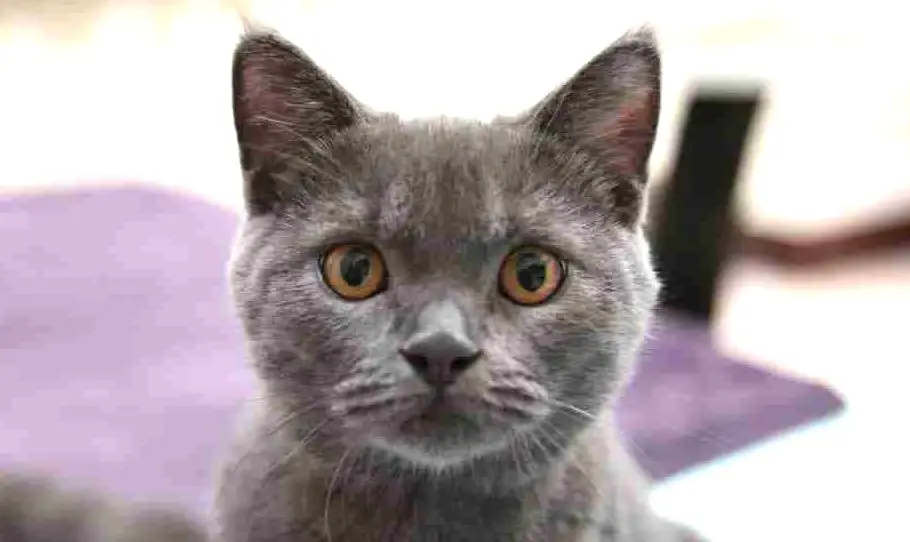
The Korat is another cat from the hot climate of SE Asia. In fact, they come from the region of Korat which is part of Thailand. Unlike Siamese cats from the same region, Korat cats have the same lineage but are available in a full single grey color – they do not have the color point coats of Siamese cats. They do have a short, fine coat which means they don’t shed much!
Slightly stockier than Siamese cats and with green eyes rather than blue, these cats are popular because of their interesting appearance and personality. They are known to be social, family cats but are a little more laid back than their Siamese cousins.
Singapura
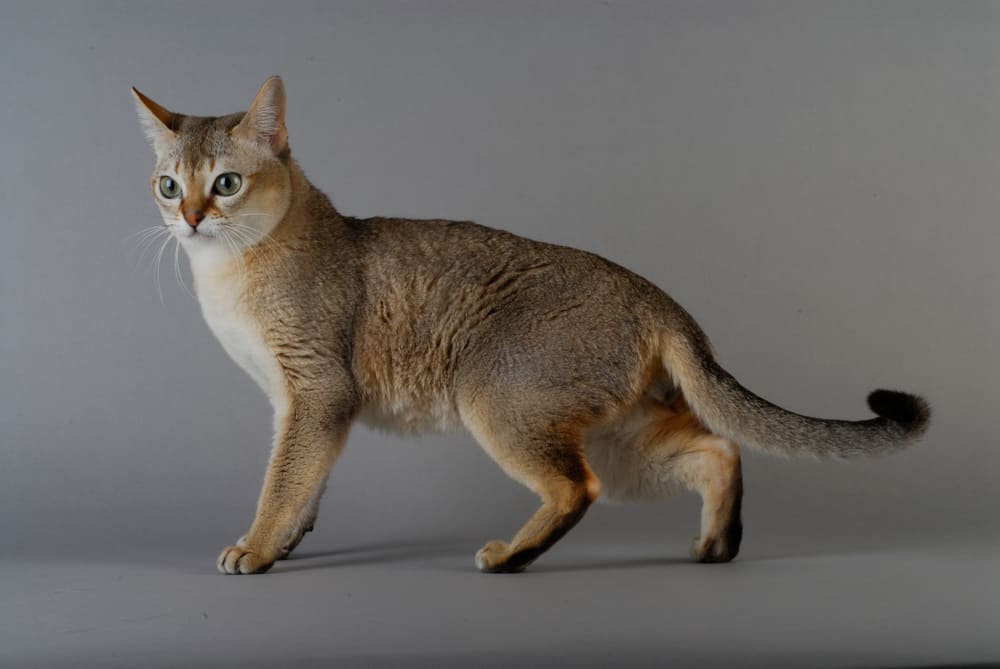
As the name suggests, the Singapura is thought to originate from Singapore. It is a natural cat breed having developed without human interference. This cat, also known as the drain cat, is a stocky, muscular-looking cat – but is one of the smallest cats in the world!
They average about 1.8kgs when fully grown – which is really light given that your average domestic shorthair tends to come in at anything from 3-5kgs dependent on sex!
They have a distinctive face with very large, round eyes and large ears – their facial appearance is very distinctive.
Their coat is famed for being a shorthair with a ticked tabby pattern and they only come in one recognized color – sepia.
Apart from their coloration and pattern, the coat is characterized by being very short and fine which means when they shed, which is infrequently, the volume of hair dropped is very low.
They have a lively personality, a very sociable and can be quite a cheeky cat with some people suggesting their personality is like a cross between a cat, dog, and monkey! Friendly, intelligent, and cheeky…
Ideal as an indoor house cat in a family who can keep them mentally stimulated!
Oriental Shorthair
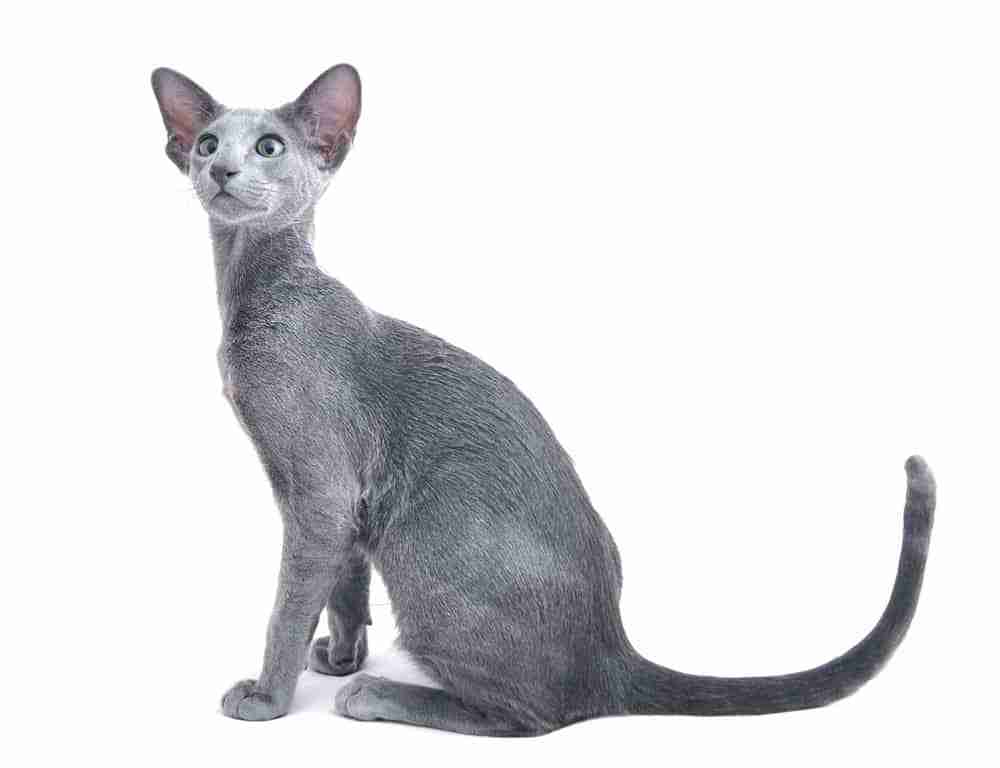
The easiest way to describe an oriental shorthair is to say that they are a siamese cat without having the colorpoint coat or the blue eyes (although they can have blue eyes!).
Basically, an oriental shorthair is a cat with a siamese body shape, personality, intelligence, and size but with any color variation, you can think of!
Oriental shorthairs can be tabby, pure white or black, bicolor or tricolor! Basically, if you want a siamese cat but want a bit more choice of coat color and pattern then the Oriental shorthair is the cat you are thinking of.
Like their famous relatives, they have a single, fine coat of shorthairs that sheds infrequently in low volume!
Do Shorthair Cats Shed?
Clearly, we can see that there is no such thing as a cat that does not shed. Even shorthair cats shed. But, some shed less than others and if you really can’t abide cat hair around the home or on your furniture and clothing then there are some amazing shorthair cat breeds that tend to originate from SE Asia that might be ideal for you!
If you want a cat that doesn’t shed much make sure they are a single-coat, short-haired cat whose diet is on point then with minimal grooming you should be able to avoid the worst of cat hair around the home!
